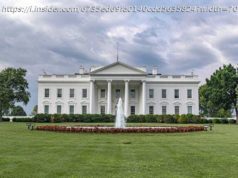The state roundly rejected a proposal, meant to block Medicaid expansion, that would have reduced voters’ ability to direct policy. It was just the latest clash between voters and state legislatures.
Coming on the same night that voters in San Francisco ousted their lightning rod of a district attorney, Chesa Boudin — in what was widely interpreted as a setback for progressive ideas on criminal justice — it would have been easy to overlook what happened on Tuesday in South Dakota. But the results there are no less consequential for national politics. Voters in South Dakota sent a resounding message of their own to the state’s conservative power structure: We’re in charge here, not you. The immediate issue was a constitutional amendment requiring that certain voter-initiated referendums must pass by 60 percent, rather than a simple majority. The measure was defeated decisively, with more than two-thirds of voters rejecting the proposed new threshold. But this wasn’t just a political process story. It was the latest round in a national fight between voters and state legislatures, who have been battling for primacy on issues like marijuana legalization, gerrymandering and health care. Last year, my colleagues Reid Epstein and Nick Corasaniti took a broad look at Republican-led efforts to limit ballot initiatives, which have grown only more intense in the last 12 months. In South Dakota, the ballot question was pushed by Republican state lawmakers who are hoping to defeat a November referendum on expanding access to Medicaid. To David Daley, the author of several recent books on grass-roots democracy, it was a classic example of the power struggle playing out in state capitols across the country.
“Whenever citizens effectively use the ballot initiative to make policy changes the legislature opposes, lawmakers bite back, and they bite back hard,” Daley said. Raising the threshold for ballot drives is an increasingly common tool. A new report by RepresentUs, a nonpartisan group that promotes ballot initiatives, found that since 2017, at least four states have passed laws that impose supermajority requirements and put them in front of voters as a ballot question, out of at least 64 bills proposed. And it’s not always Republican lawmakers pitted against progressive voters.
“We’ve seen legislators attempt to threaten and limit the ballot-measure process in red, blue and purple states,” said Anh-Linh Kearney, a research analyst for RepresentUs, pointing to Democratic-controlled Colorado, which raised the requirement for passing ballot measures to 55 percent in 2016. Chris Melody Fields Figueredo, the executive director of the Ballot Initiative Strategy Center, described a “growing trend of tactical ways to make the process harder,” pointing to her group’s tally of 108 laws introduced this year in 26 states that would make technical tweaks to the rules surrounding ballot initiatives. Since 2017, Fields Figueredo said, the center had counted a fivefold increase in bills introduced and enacted that would make it more difficult to pass ballot measures.






